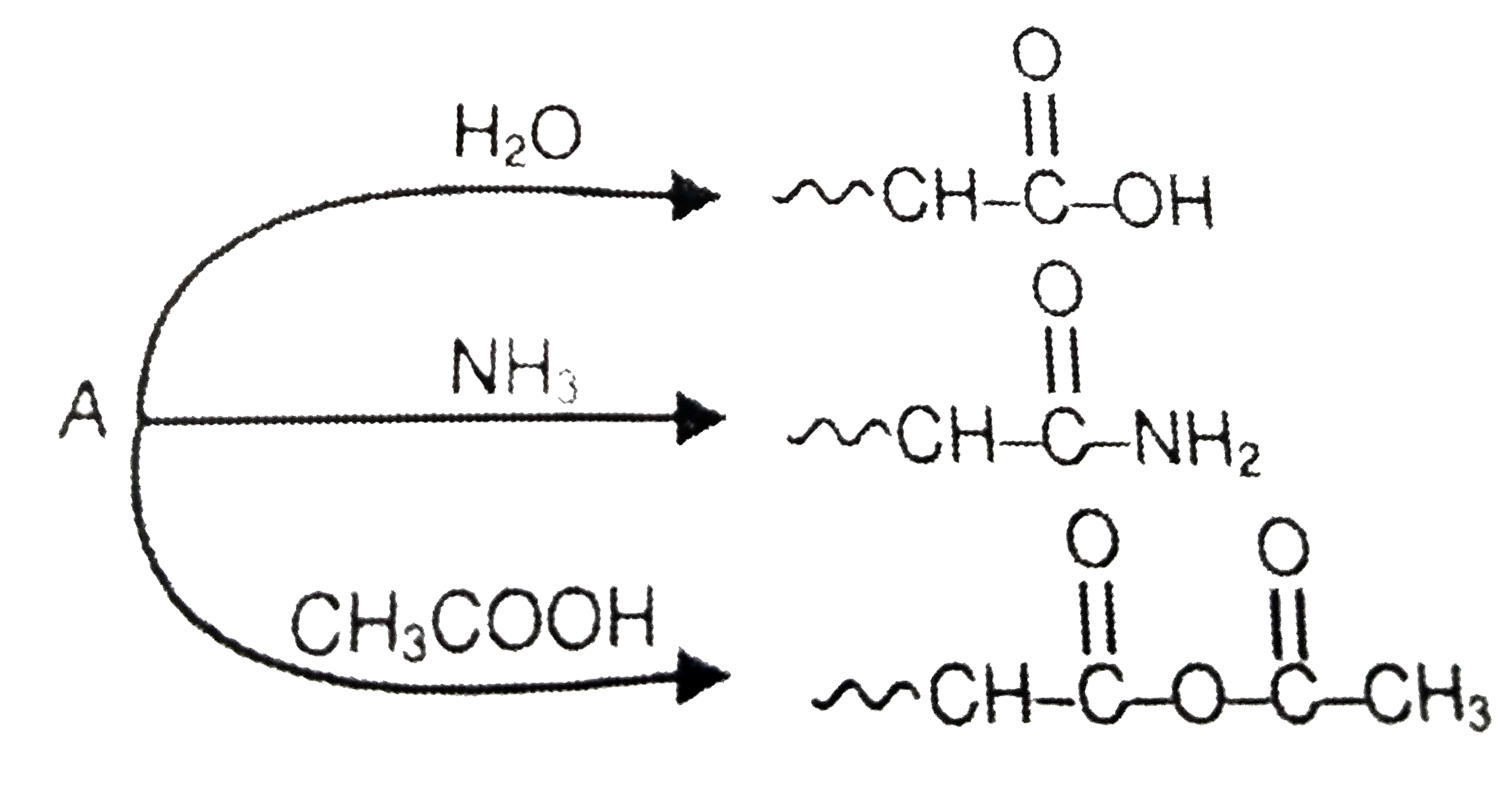One mole of an organic compound (A) having M.F. C2H6O reacts with MeMgI to liberate one mole of methane. (A) reacts with CH3COCl to yield a sweet smelling liquid (B). Identify (A) and (B).
To solve the problem, we need to identify the organic compound (A) with the molecular formula C2H6O that reacts with MeMgI (methylmagnesium iodide) to liberate one mole of methane (CH4) and then reacts with CH3COCl (acetyl chloride) to yield a sweet-smelling liquid (B).
1. Identify Compound A:
- The molecular formula of compound A is C2H6O. This formula suggests that it could be either an alcohol or an ether.
- Since it reacts with MeMgI to liberate methane, it indicates that A is likely an alcohol. This is because Grignard reagents (like MeMgI) react with alcohols to produce alkanes and magnesium alkoxides.
- The only alcohol that fits the formula C2H6O and can react with MeMgI to release methane is ethanol (C2H5OH).
2. Reaction of A with MeMgI:
- When ethanol (C2H5OH) reacts with MeMgI, it forms ethyl magnesium iodide and liberates methane:
C2H5OH+MeMgI→C2H5MgI+CH4
- This confirms that compound A is indeed ethanol.
3. Identify Compound B:
- Next, we need to determine what happens when ethanol (A) reacts with acetyl chloride (CH3COCl).
- The reaction between ethanol and acetyl chloride produces ethyl acetate (C4H8O2), which is a sweet-smelling liquid:
C2H5OH+CH3COCl→C2H5OCOCH3+HCl
- Ethyl acetate (C2H5OCOCH3) is known for its sweet smell, confirming that compound B is ethyl acetate.
Conclusion:
- Compound A: Ethanol (C2H5OH)
- Compound B: Ethyl acetate (C4H8O2)
- The molecular formula of compound A is C2H6O. This formula suggests that it could be either an alcohol or an ether.
- Since it reacts with MeMgI to liberate methane, it indicates that A is likely an alcohol. This is because Grignard reagents (like MeMgI) react with alcohols to produce alkanes and magnesium alkoxides.
- The only alcohol that fits the formula C2H6O and can react with MeMgI to release methane is ethanol (C2H5OH).
- When ethanol (C2H5OH) reacts with MeMgI, it forms ethyl magnesium iodide and liberates methane:
C2H5OH+MeMgI→C2H5MgI+CH4
- This confirms that compound A is indeed ethanol.
- Next, we need to determine what happens when ethanol (A) reacts with acetyl chloride (CH3COCl).
- The reaction between ethanol and acetyl chloride produces ethyl acetate (C4H8O2), which is a sweet-smelling liquid:
C2H5OH+CH3COCl→C2H5OCOCH3+HCl
- Ethyl acetate (C2H5OCOCH3) is known for its sweet smell, confirming that compound B is ethyl acetate.
- Compound A: Ethanol (C2H5OH)
- Compound B: Ethyl acetate (C4H8O2)
Topper's Solved these Questions
- ALCOHOLS, PHENOLS AND ETHERSBOOK - PRADEEPCHAPTER - ALCOHOLS, PHENOLS AND ETHERSEXERCISE - ADDITIONAL QUESTIONS (SHORT ANSWER QUESTIONS)
81 Videos
- ALCOHOLS, PHENOLS AND ETHERSBOOK - PRADEEPCHAPTER - ALCOHOLS, PHENOLS AND ETHERSEXERCISE - ADDITIONAL QUESTIONS (LONG ANSWER QUESTIONS)
6 Videos
- ALCOHOLS, PHENOLS AND ETHERSBOOK - PRADEEPCHAPTER - ALCOHOLS, PHENOLS AND ETHERSEXERCISE - NCERT EXEMPLAR PROBLEMS WITH ANSWERS, HINTS AND SOLUTION (LONG ANSWER QUESTIONS)
4 Videos
- ALDEHYDES, KETONES AND CARBOXYLIC ACIDS BOOK - PRADEEPCHAPTER - ALDEHYDES, KETONES AND CARBOXYLIC ACIDS EXERCISE - IMPORTANT QUESTIONS FOR BOARD EXAMINATION
29 Videos
Similar Questions
An organic compound (A) (C5H7OCl) reacts rapidly with ethanol to give (B) (C7H12O2). (A) also reacts with water to produce an acid which reacts with bromine to give (C ) (C5H8Br2O2). (B) on boiling with H2SO4 forms an acid (D). When (D) is oxidised with KMnO4 an acid (E ) (C4H6O3) is produced. On mild heating, (E ) gives (F) (C3H6O) which cannot be oxidised by ammoniacal AgNO3. Identify the compounds (A) to (F).
View SolutionThe compound that reacts with CH3MgBr to yield methane as one of the products is
View Solution
Knowledge Check
B2H6 react with H2O to yield
AO2 gasBH2 gasCSO2 gasDNone of these0.40g of an organic compound (A), (M.F.−C5H8O) reacts with x mole of CH3MgBr to liberate 224 mL of a gas at STP. With excess of H2, (A) gives pentan-1-ol. The correct structure of (A) is :
ACH3−C≡C−CH2−CH2−OHBCH3−CH2−C≡C−CH2−OHCH−C≡C−CH2−CH2−CH2−OHDH−C≡C−CH2−CH∣OH−CH3When H2C=CH−O−CH2CH3 reacts with one molre of HI, one of the product formed is ,
AethaneBethanolCiodoetheneDethanal
An organic compound A is widely used as preservative in pickles and has a molecular formula C2H4O2. The compound reacts with Ethanol to form a sweet smelling compound B.
Identify the compound A Write the chemical equation for its reaction with ethanol to form compound B.
Which gas is produced when compound A reacts with sodium carbonate?
Name the sweet smelling compound B.
View SolutionAn organic compound A,C5H8O reacts with H2O,NH3 and CH3COOH as described below A is

View SolutionAn unknown organic compound (A) having M.F. C3H8O3 reacts with an excess of acetyl chloride gives an acetyl derivative with M.Wt. 218. Then howmany hydroxyl groups are in 'A'.
View SolutionAn orgainc compound A upon reacting with NH3 gives B On heating B give C.C in presence KOH reacts with Br2 to yield CH3CH2NH2A is .
View SolutionWhen H2C=CH−O−CH2CH3 reacts with one molre of HI, one of the product formed is ,
View Solution
